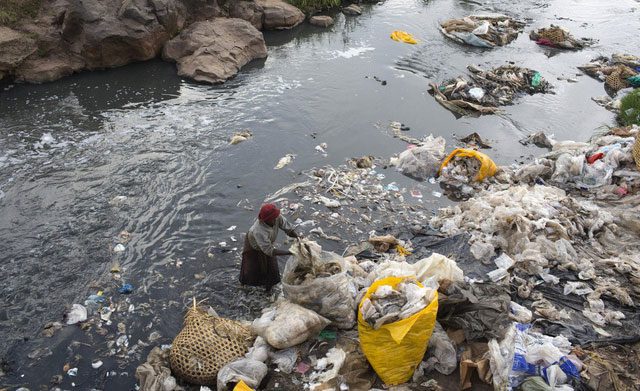Researchers have discovered 23 active pharmaceutical ingredients exceeding “safe” levels in 43.5% of 1,052 water samples taken from rivers across 104 countries. These include components found in antidepressants, antihistamines, stimulants, benzodiazepines, and pain relievers, according to the New York Post.
Rivers in Pakistan, Bolivia, and Ethiopia are among the most heavily polluted. In contrast, rivers in Iceland, Norway, and the Amazon rainforest are the least contaminated by these pharmaceuticals.

23 active pharmaceutical ingredients exceed permissible levels causing river water pollution – (Photo: NEW YORK POST)
Co-author of the study, researcher Alejandra Bouzas-Monroy at York University (UK), stated: “Our findings indicate a very high rate of rivers worldwide are threatened by pharmaceutical pollution.”
This new study was published in the journal Environmental Toxicology and Chemistry.
Bouzas-Monroy, who analyzed samples collected from across Europe, North America, Australia, Asia, and Africa, noted that this is “truly the first global assessment.”
According to the U.S. Geological Survey (USGS), pharmaceuticals enter rivers, lakes, and streams through various means, including discharges from pharmaceutical manufacturing facilities, agricultural runoff where livestock are frequently treated with medications to prevent disease, and the excretion of medications by individuals whose bodies do not metabolize them fully.
The USGS conducted the first major study on this topic in 2002, discovering seven different chemicals in at least half of the tested rivers; 34% of the rivers contained ten or more of the aforementioned substances.
In 2019, USGS also examined 1,120 wells and springs across the United States, finding them to contain many types of medications, the most prevalent being carbamazepine (an anticonvulsant), sulfamethoxazole (an antibiotic), meprobamate (a tranquilizer), and hydrocortisone (an antihistamine).
The long-term health effects of human exposure to low levels of these drugs remain unclear. However, the first victims are fish and aquatic organisms, whose biological processes can be disrupted by the high levels of pharmaceuticals released by humans.
Meanwhile, scientists are concerned about the surplus of antibiotics in the environment. They warn that it contributes to the emergence of “superbugs” resistant to antibiotics.
“The rise of antibiotic-resistant bacteria is a global health emergency that could kill 10 million people by 2050,” according to the United Nations.

















































